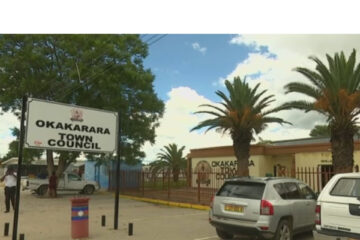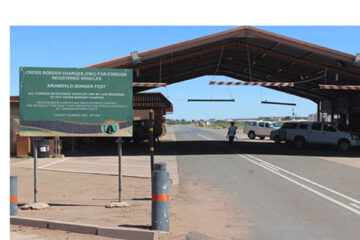Staff Writer
Electricity supply to Namibia is reduced by five percent in every subsequent stage, when load shedding occurs South Africa.
Andreas Simon, senior public relations officer at the Ministry of Mines and Energy, stated that Namibia has two power import contracts with Eskom and that South Africa’s power challenges influence the amount of electricity it provides to its foreign clients.
“We have a 100MW firm deal signed earlier this year. Under this contract if Eskom load sheds, then they curtail our supply according to the stage of load shedding in South Africa. When its stage 1 or 2 load shedding they reduce our supply by 10% (10MW) Load shedding of stage 3 in South Africa result in a reduction of 15% (15MW). There is a 5% reduction in supply with every subsequent stage. EG. Stage 4 results in 20%, stage 5 results in 25%, stage 6 results in 30%, stage 7 results in 35% and the final stage, stage 8 results in a 40% or 40MW reduction from the 100MW contract we signed,” he explained.
Furthermore, Simon stated that there is a 300MW non-firm contract that Namibia cannot access if South Africa is load shedding.
“A stage of load shedding in South Africa, means that they drop 1000MW so when they are at stage 8 load shedding, South Africa loses 8000MW. And at that time, they only provide us with 60MW. The 60MW is inconsequential in the bigger scheme of things,” explained Simon.
Recently the CEO of Nampower said that Namibia purchases its power from the Southern African Electricity Pool when it affected by SA’s regular load shedding.
Eskom, which has been experiencing frequent power outages for the past three weeks, recently renegotiated and extended its electricity supply agreement with NamPower for another three years, following NamPower’s five-year agreement with Eskom for the supply of 200MW and additional non-firm supply dependent on transmission capacity.
Meanwhile, South Africa’s president, Cyril Ramaphosa, has stated that the load shedding is the result of older power stations, theft, and fraud.
“Many of our power stations were built many years ago. The average age of Eskom’s power stations is 35 years. Generally, as power stations get older, their performance deteriorates. The construction of our newest power stations, Medupi and Kusile, started late and they have experienced several delays and some design flaws. These challenges are being addressed. As a result of this, Eskom deferred essential maintenance to keep the lights on, which is causing breakdowns and failures now. The performance of some of Eskom’s power stations have been further worsened by extensive theft, fraud and sabotage,“ he lamented.
Namibia who plans to become 80% self-sustainable by 2028, produces about 40% of its energy requirements, while about 60% is imported from neighbouring countries through the South African Power Pool.
Namibia imports 180 MW from Zambia, split between a 100MW signed in 2017, valid until 2027 and an 80MW signed this year for five years.
Moreover, the country has an 80MW import contract with Zimbabwe that expires in 2024.
Furthermore, Simon stated that each citizen can practice energy efficiency to reduce their own personal consumption in order to assist in the responsible use of electricity and ensure that our consumption is driven downwards and our dependence on South Africa decreases.




